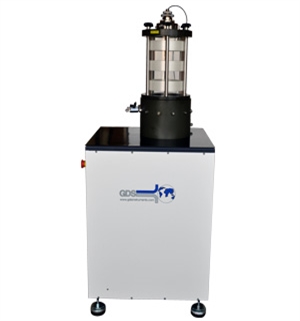
|
The Advanced Dynamic Triaxial Testing System (DYNTTS) is a high-end testing apparatus that combines a triaxial cell with a dynamic actuator capable of applying cyclic load, deformation and stresses at frequencies up to 10Hz. The cell itself is screw-driven from an integral base unit housing the motor drive. Axial load and deformation are applied through the base of the cell. The system can be combined with a dynamic cell pressure actuator so that cell pressures may also be applied dynamically up to the design frequency of the system. The DYNTTS allows an easy-to-prepare cylindrical specimen to be saturated and consolidated to approximate in-situ conditions, before monotonic or cyclic loading stages are applied, the latter modelling the stress conditions induced by wind and wave loadings. Note user-defined cyclic loading patterns can also be applied to the test specimen when using the DYNTTS.
|
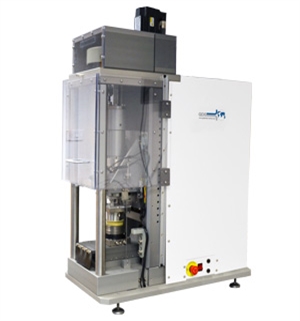
|
The Electromechanical Dynamic Cyclic Simple Shear device (EMDCSS) is used for the direct simple shear testing of cylindrical soil specimens. It is capable of carrying out dynamic cyclic tests from small strain (0.005% shear strain amplitude) to large strain (10% shear strain amplitude), as well as extremely accurate static loading. The easy-to-prepare specimen is subjected to principal stress rotation representative of many soil responses observed in offshore energy structure foundations (e.g., piled foundations). Note user-defined cyclic loading patterns, such as records of wave loading during storms, can also be applied to the test specimen when using the EMDCSS. |
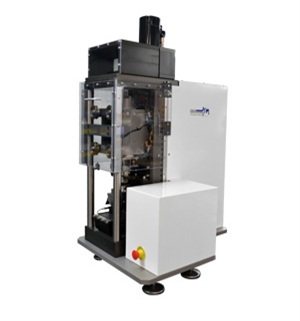
|
The Variable Direction Cyclic Simple Shear device (VDDCSS) enables direct simple shear to be applied in two directions, rather than the standard single direction. This is achieved through use of a secondary shear actuator that acts at 90 degrees to the primary shear actuator. When used as a variable direction system, the secondary shear axis load and displacement can be applied independently of the primary shear axis. This allows simple shear tests to be performed in any horizontal direction, approximating complex loading patterns that offshore structures may experience due to combinations of wind and wave loading. |
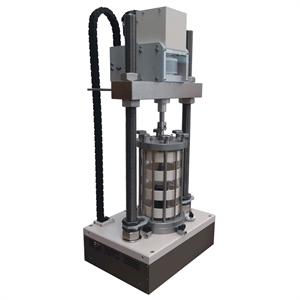
| ELDYN – GDS Enterprise Level Dynamic Triaxial Testing System
The GDS Enterprise Level Dynamic Triaxial Testing System (ELDYN) is an entry level dynamic triaxial system, based on an axially-stiff load frame with a beam mounted electro-mechanical actuator. The ELDYN has been designed to fulfill the demand within the geotechnical laboratory testing industry for a lower cost, more basic dynamic triaxial testing system, yet still perform to the very advanced standards that customers expect from GDS. The ELDYN allows a cylindrical specimens to be saturated and consolidated to approximate in-situ ground conditions, before monotonic or cyclic loading stages are applied, the latter modelling the stress conditions induced by wind and wave loadings.
|
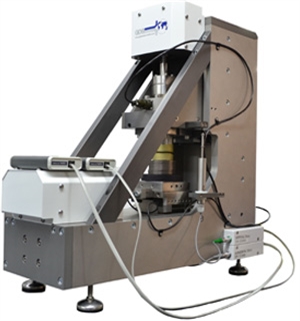
| GDSSS – GDS Shearbase System
The GDS Shearbase System (GDSSS) is an electro-mechanical shear testing device that can be configured as either a simple shear or direct shear apparatus. The benefit of this apparatus is that the conversion between simple shear and direct shear is simple and therefore if both options are not supplied at time of build the missing option can be supplied at a later date. As direct shear and direct simple shear tests can be performed on soil specimens, the GDSSS can provide typical strength and deformation parameters useful for the design and assessment of offshore energy structure foundations
|
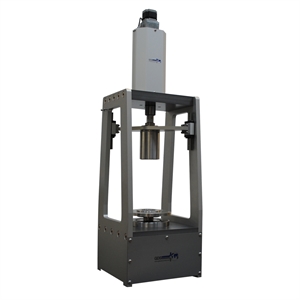
|
GDSIST – Interface Shear Tester
The Interface Shear Tester is a CRS consolidation cell with the additional ability that the base pedestal may infinitely rotate. The internal load cell measures both the axial force on the specimen as well as the torque generated. The system is designed to test the shear interface between the specimen and the top-cap. Users may bond specific materials to the top-cap for testing. Such features allow the GDSIST to define interface strengths between structural and geo-materials, which is often required when designing offshore energy structure foundations.
|
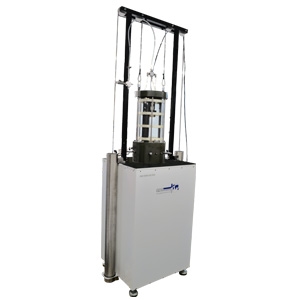
|
GDSHCA – GDS Small-Strain Hollow Cylinder Apparatus
The GDS Small-Strain Hollow Cylinder Apparatus (SS-HCA) allows for rotational displacement and torque to be applied to a hollow cylindrical specimen of soil. Using this device it is possible to control the magnitude and direction of the three principal stresses. Studies can for example be made to assess the effect of anisotropy of soil specimens, principal stress rotation, and the effect of varying intermediate principal stress. Two versions of the SS-HCA are available: A dynamic (SSHCA d), and a lower cost static (SS-HCA s) version. The dynamic version is particularly useful when determining typical strength and deformation parameters for the design and assessment of offshore energy structure foundations.
|
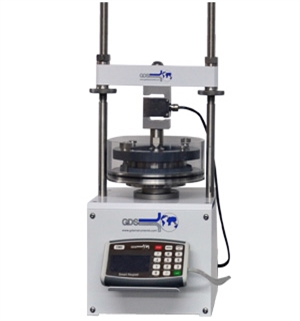
|
GDSAOS – GDS Automatic Oedometer System
The GDS Automatic Oedometer System (GDSAOS) is the modern replacement for a traditional hanging weight oedometer. The GDSAOS is a self-contained stepper motor driven unit that can be controlled using its Smart Keypad, or from a PC using a USB interface. There is no requirement for compressed air or manually placed weights. When used with the GDSLAB control and data acquisition software, the GDSAOS can be used for a complete array of tests beyond those which a hanging weight oedometer can perform. This includes determination of consolidation parameters useful when designing and assessing offshore energy structure foundations.
|
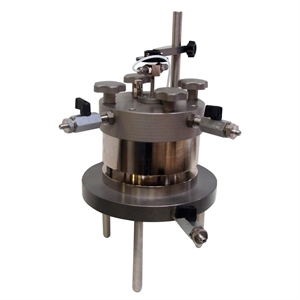
|
GDSCTS – GDS Consolidation Testing System
The GDS Consolidation Testing System (GDSCTS) is a state-of-the-art, fully-automated consolidation testing system designed for soil. The system is based on the Rowe and Barden type consolidation cell using GDS pressure/volume controllers from the Advanced, Standard, or Enterprise range. Two of these pressure controllers link to the computer, one for axial stress and axial displacement control and one for setting back pressure. Such functionality enables the GDSCTS to determine consolidation parameters useful when designing and assessing offshore energy structure foundations.
|
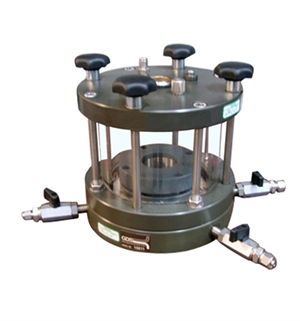
|
GDSCRS – GDS Consolidation Constant Rate of Strain cell
The GDS Consolidation Constant Rate of Strain cell (CRS) is designed primarily for advanced commercial testing laboratories who want to reduce the time required to complete a consolidation test. The CRS cell fits either a new GDS or existing load frame in place of a triaxial cell. The load frame-based one dimensional consolidation cell is capable of applying back pressure and measuring pore pressures up to 1MPa (low pressure version) or 20MPa (high pressure version). Overall the CRS system allows consolidation parameters useful when designing and assessing offshore energy structure foundations to be determined quickly and accurately. |
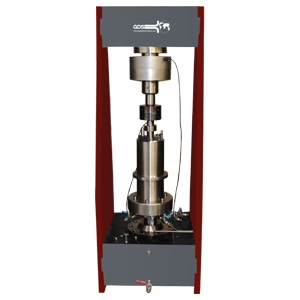
|
ST-RTS - Static Triaxial Rock Testing System
The Static Triaxial Rock Testing System enables axial load application up to 1MN, with triaxial cells rated up to 70MPa used to confine test specimens of maximum 50mm diameter. |
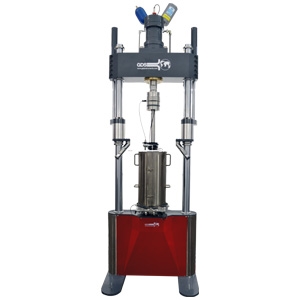
|
DT-RTS - Dynamic Triaxial Rock Testing System
The Dynamic Triaxial Rock Testing System can apply axial loads of up to 400kN at dynamic frequencies of 20Hz and below. Dynamic loading is achieved using a servo-hydraulic actuator system. |
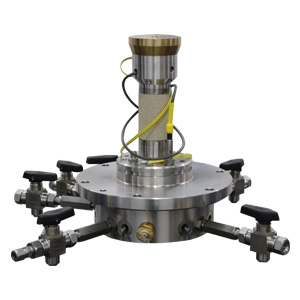
|
GDSAV - Acoustic Velocity transducer
The Acoustic Velocity transducers allow P- and S-wave velocities to be measured within a rock specimen. The transducers are mounted in the pedestal and top-cap, or in some cases the sides of the specimen. |
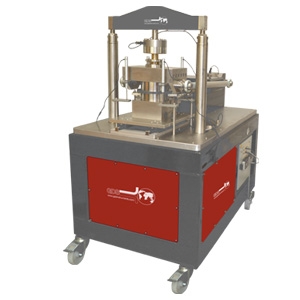
|
GDSLADS - Large Automated Direct Shear System (300mm)
The Large Automated Direct Shear system is an electro-mechanical direct shear testing device for specimens of up to 300mm square in size. |
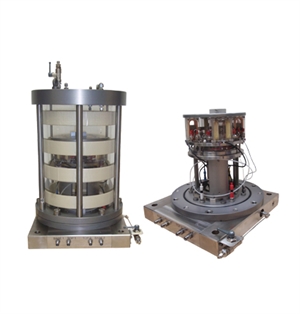
|
GDS Resonant Column Apparatus For many years the resonant column apparatus has been used in research and commercial laboratories to estimate values of the shear modulus, G, and damping ratio, D, for soil specimens across the small to medium strain range (< 1 %). The variation in these parameters with increasing strain magnitude allows engineers to conduct dynamic response analyses, such as those using finite element and non-linear analytical methods, which enable performance assessment of natural and engineered structures subjected to dynamic and cyclic loadings. |